Meeting the needs for both large and small showering spaces, as well as inclusive design, walk-in shower enclosures remain big news in bathroom design
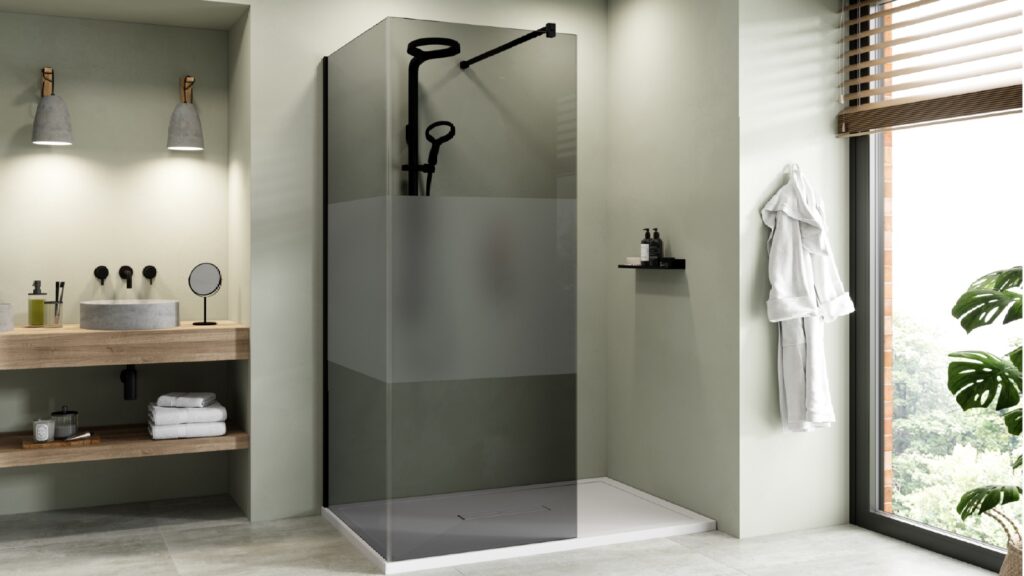
Kudos Ultimate Walk-in shower enclosure is shown in smoked glass with a white stripe, with a stability bar for larger sizes.
The walk-in enclosure has been a staple style for the bathroom specialist for the past two decades, but sales show no sign of slowing.
According to a recent survey by bathroom retail franchise Ripples into showering trends, consumers are removing baths in favour of showers, and a staggering 80% said they would choose a walk-in or wetroom.
Sponsored Video
With its ability to suit a range of consumer needs, its minimal aesthetics with step-free access is as welcomed for its high-end interior aesthetics as it is for its practicality to suit all ages and abilities.
Showering product manager at Bathrooms to Love Tanna Molyneux continues: “Their seamless and open design resonates with a wide array of customer types, particularly the multi-generational household looking for ease of access, safety, on-trend style and low maintenance.”
In fact, such is the demand, marketing director of Sonas Bathrooms Louise Murphy comments: “In recent years, the demand for walk-in shower enclosures has experienced a significant increase with Sonas Bathrooms reporting an impressive threefold surge in wetroom panels sales.”
Small spaces
A go-to for showering space in larger bathrooms, interestingly experts point retailers could be missing a trick by not specifying the high-end look of a walk-in for smaller spaces.
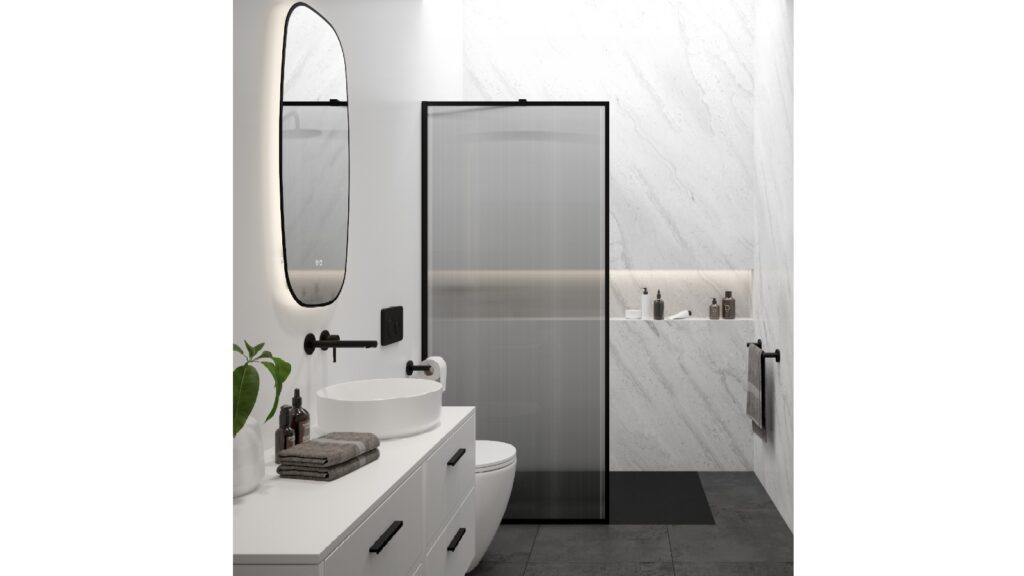
Part of the Sonas Bathrooms 2024 Collection is the fully-framed Mirage offers a choice of smokey and fluted glass.
Managing director of CRL Europe Simon Boocock states: “Walk-in showers make effective use of floor space, making this a suitable option for compact bathrooms. A floor-to-ceiling frameless shower screen creates an almost invisible divide in a small bathroom, so the room doesn’t feel cramped or closed off.”
Louise Murphy agrees, explaining: “In a smaller bathroom, where every inch counts, traditional shower enclosures with doors can visually segment the space, making it appear even smaller.”
In fact, Sonas recently introduced its Aspect Wetroom Panel range in sizes from 300mm, extending up to 1400mm for smaller spaces.
Style variety
The variety of sizes in walk-in enclosures are equally matched by the choices of design now available on the market.
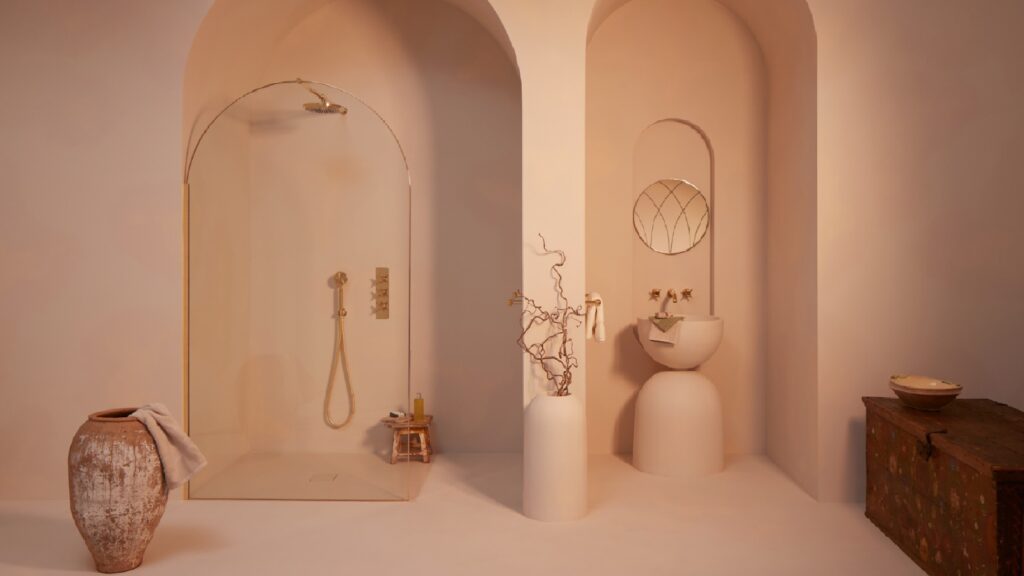
The Matki EauZone Arch Wet Room is made from 10mm glass – in clear, tinted and frosted options – and 11 Swadling Brassware Special finishes
Whether framed or frameless, with coloured or textured glass, designers can choose a walk-in to suit a wide array of bathroom styles and interior design tastes. It’s no surprise, then, experts state walk-in enclosure collections that provide a broad offer are the most popularity.
Managing director of Matki UK Nicholas Cunild cites its EauZone wetroom panel as its most popular walk-in product: “This has a vast range of options in terms of finish, size, framed or frameless and glass designs. It is also available bespoke.”
Marketing manager of Saniflo UK Amanda Mills says demand for variety is also reflected in her company sales, as she points out: “Among the popular models, the Kinedo Ekinox stands out due to its versatility with numerous configurations, allowing for customisation to fit various spaces and preferences. Kinequartz also offers different glass types.”
Fluted glass traction
However, a look that has recently launched on to the market is fluted glass, offering opacity for modesty and providing texture in a space otherwise dedicated to hard surfaces.
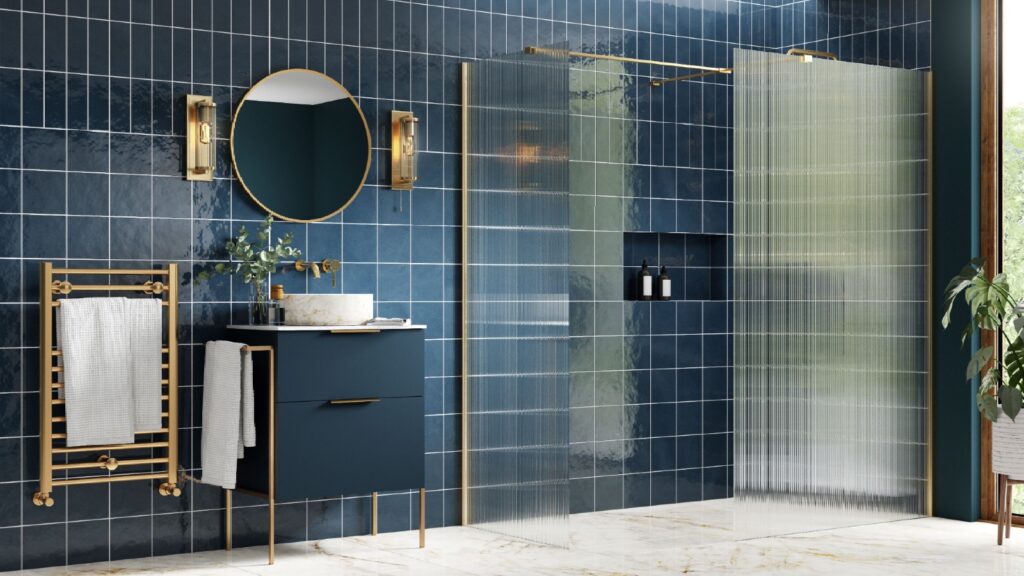
Bathrooms to Love Reflexion Iconix Fluted Glass Wetroom Panel is made from 8mm glass, shown with a Brushed Brass profile, and comes in four widths
Tanna Molyneax of Bathrooms to Love by PJH comments: “With fluted design as one of the biggest trends this year, it’s no surprise that soft fluted glass screens are the ones to watch over the coming years. Incorporating textured or ribbed glass into walk-in showering design is steadily increasing, striking a perfect balance between visibility and privacy.”
And Louise Murphy of Sonas Bathrooms agrees fluted glass is gaining traction: “The Songs 2024 Collection introduced the Mirage Wetroom Panel range, which features slimmer frame designs and offered enhanced privacy through options like fluted or smoked glass.:
Upsell with design
It is these design elements, along with material qualities, which can help bathroom retailers upsell a consumer.
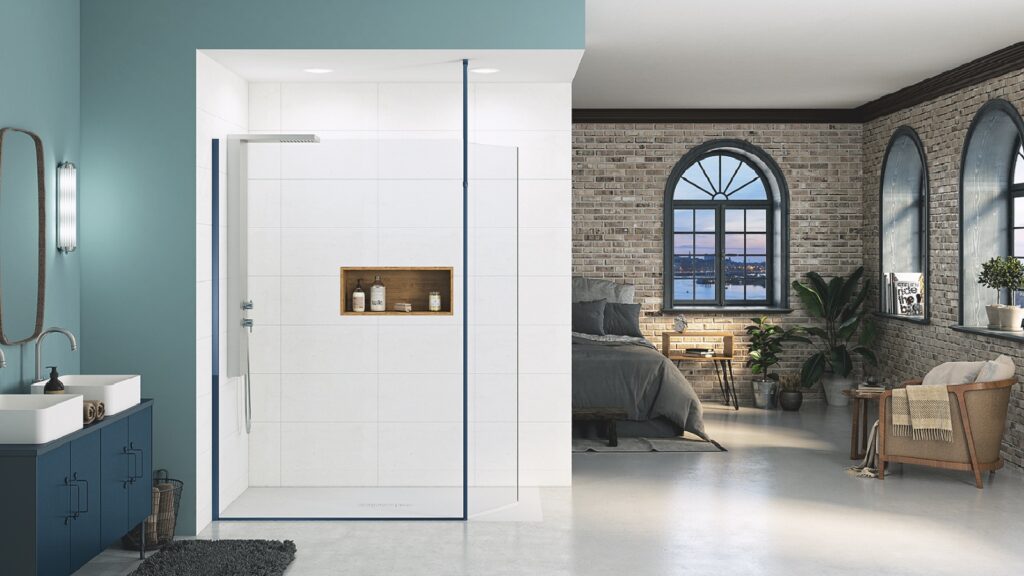
Part of its Kinedo brand Ekinox+ is available in single and duo options with coloured profiles such as Brushed Cobalt Blue (pictured) Aluminium, Copper or Brushed Stainless Steel
Sales and marketing director of Kudos UK Nick Graville states: “Glass thickness and price point are the obvious differentiating factors but when you get into the detail and compare entry/mid/mid-to-upper and premium walk-In enclosures then you really start to see some key differences that would assist retailers when trading their clients up.
“For example, our Ultimate range includes easy fit wall posts and deflector panels which require no silicone when you compare this with ranges with a lower price point, they will need to be siliconed which adds time (and therefore cost) to the installation.”
And Amanda Mills of Saniflo says it all forms part of one-to-one consultations with clients: “Bathroom retailers can encourage clients to trade up by highlighting the benefits of premium walk-in enclosures, such as durability, aesthetic appeal, and additional features. Personalised consultations and showcasing the latest designs and innovations can incentivise clients to invest in higher-end options.”
In fact, Nicholas Cunild of Matki Showers has found design details have been responsible for an uptake in his company’s walk-in sales: “Matki sales of wetroom walk-ins have been driven upwards by the introduction of new, exciting designs such as fully brass framed models in many finishes, mettalic mesh glass and the new EauZone Arch panel.”
Avoiding water ingress
But showering experts also issue designers a word of advice when specifying walk-in enclosures, which are focused around spatial challenges and water ingress.
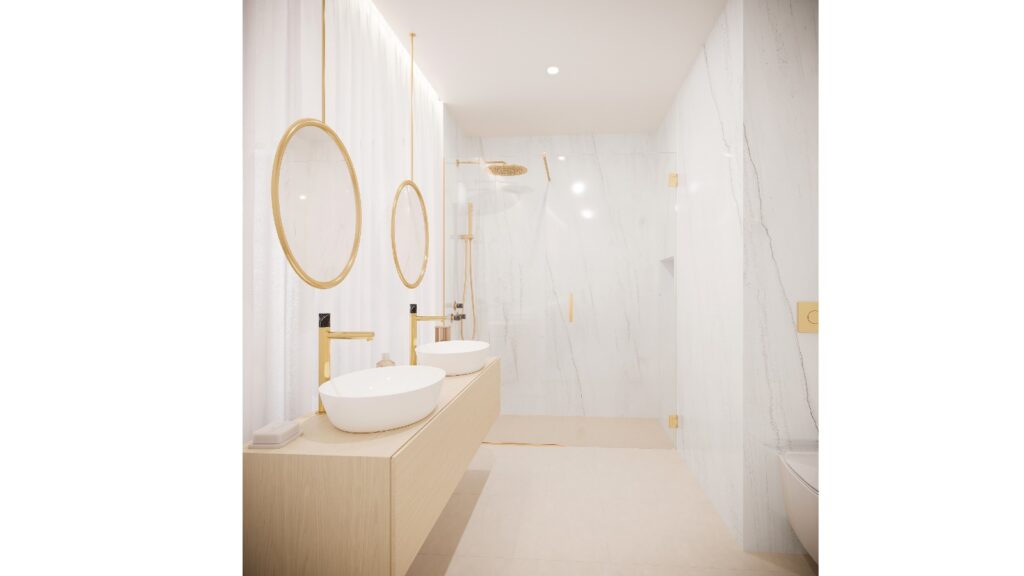
Offering bespoke shower spaces, CRL Stone provides hardware in a choice of finishes including Chrome, Antique Brass, Brushed Nickel, Matte Black and Polished Copper.
Nick Graville of Kudos states: “There are a few key elements that can sometimes be overlooked, potentially driven by the consumer’s needs, some examples include creating a walk-in in too small of a space which can result in more overspray than is necessary.”
To help mitigate the issue of overspray, designers can look to the use of deflector or ‘flipper’ panels. Louise Murphy of Sonas Bathrooms explains: “designers can strategically position showerheads or ‘flipper’ panels with wetroom panels to minimise water ingress risks.”
However, she also advises designers to consider the space around the walk-in enclosure, and advise clients on the use of wetroom panels to serve as protective barriers to safeguard the likes of nearby furniture.
Whereas in difficult to fit spaces, managing director of CRL Wetrooms Simon Boocock advises designers look for customised solutions to better fit the space. “When walk-in shower areas are created in awkwardly shaped rooms – under the eaves in a loft room bring just on example – straight out of the box glass frame and surfaces may not be ideal, as there will be difficulty in getting it to fit flush within the space, running the danger of water leaking.
“Opting for a bespoke shower solution, with glassware and wall surfaces cut to size to fit the space is really the best way to create a seamless finish.”
Certainly the walk-in shower surround market shows no sign of slowing, as it provides the coveted look of a wetroom with the structure and safety of showering with a barrier. And with such an extensive choice of sizes, glazing and finishes, bathroom designers can create design-led personalised showering spaces for all customers.



